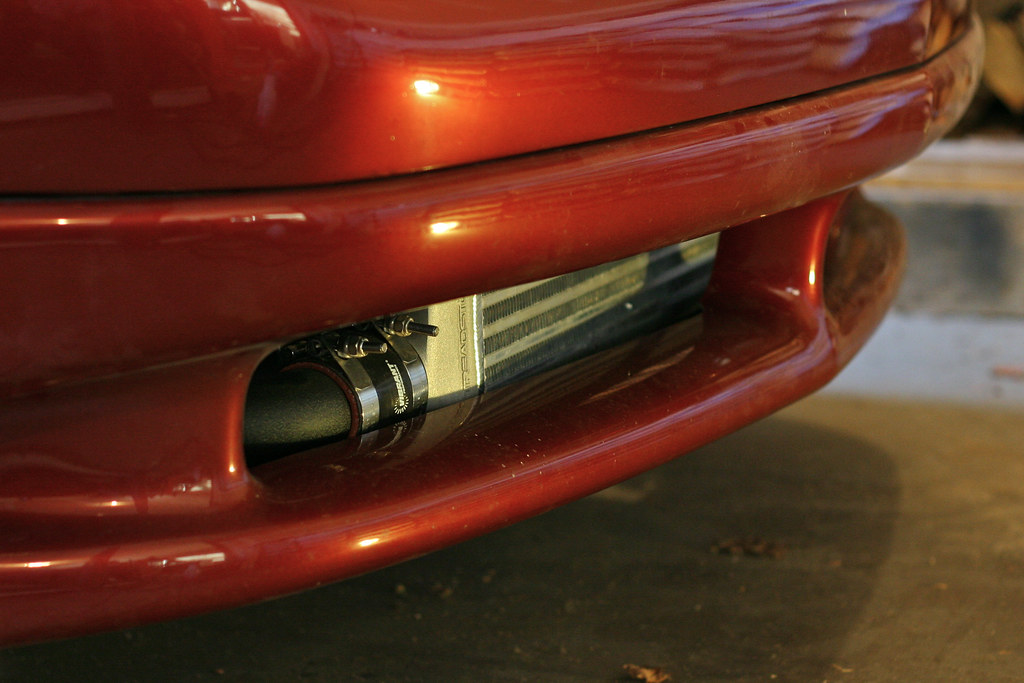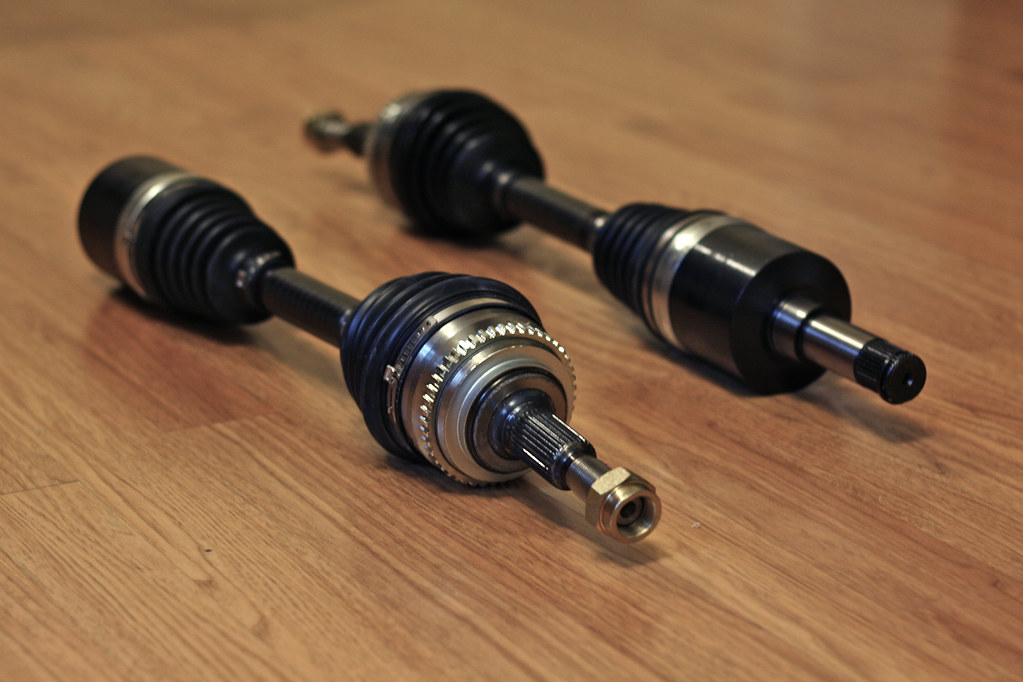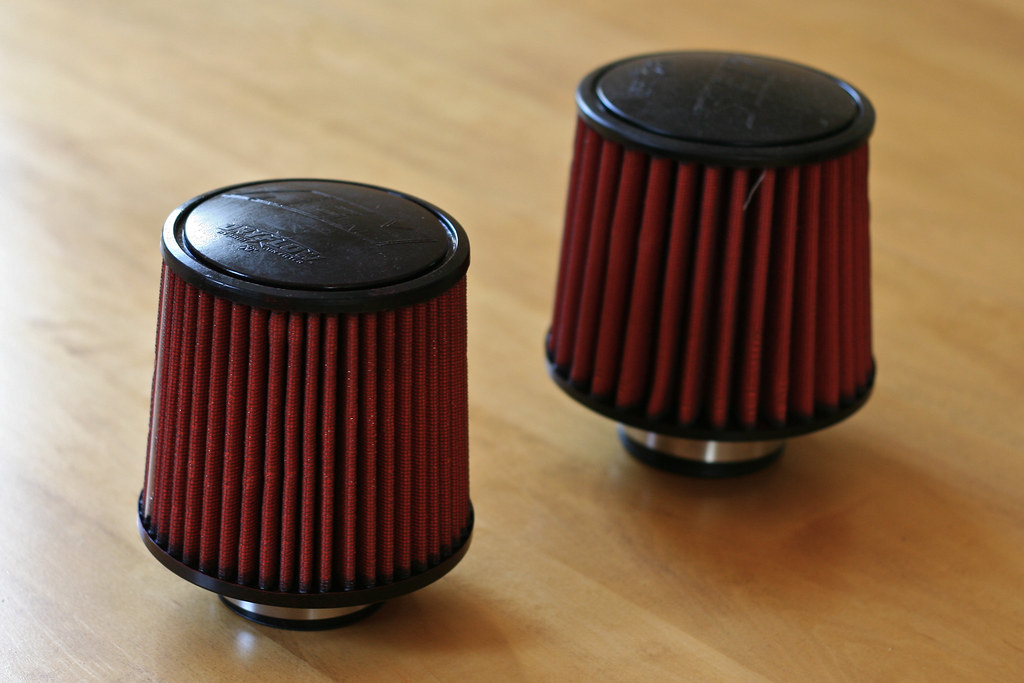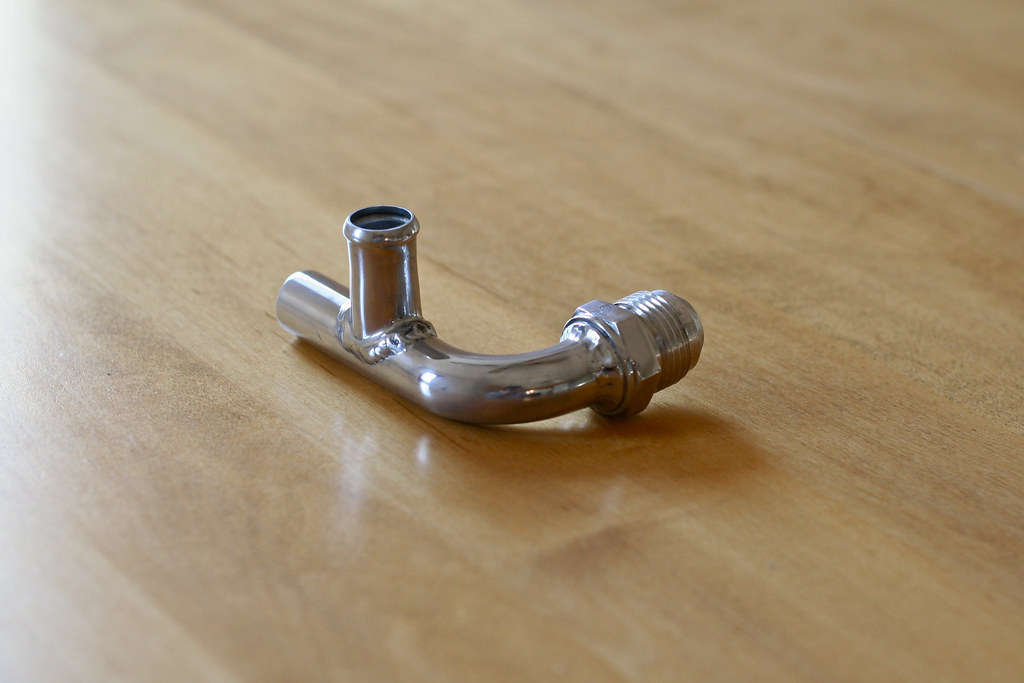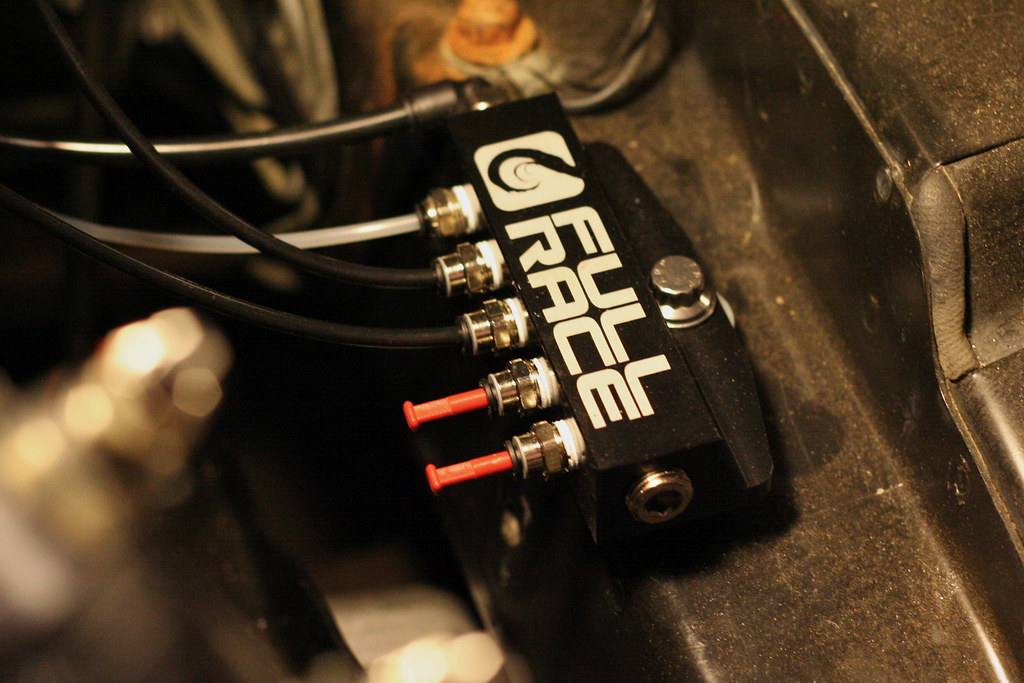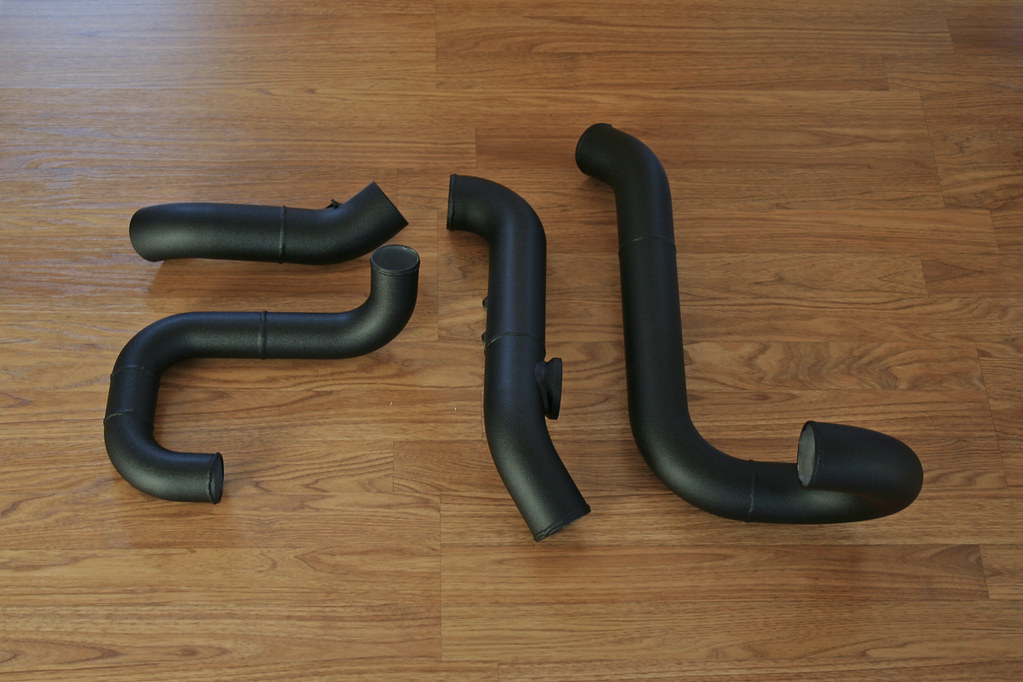This update probably isn't quite as exciting in the grand scheme of things, but it needed to be done. The car had been sitting without front brakes since last summer.

Long story short - I was doing a routine rotor/pad job on the daily and twisting apart sliding pins. Since the SL2 had so few miles and no inclement weather on its brakes, I knew that these parts were definitely good. So, being that I was in a pinch, I ended up "borrowing" the pad cradles and pins, hanging the front calipers in the wheel wells, and that is how she had sat since. Recently I collected new replacement pins, boots, and pad shims to put everything back together. Since everything was coming apart I took the chance to repaint the calipers and FINALLY install my front Goodridge lines. My first task was to get the pad cradles into shape. These, being leftovers from a year round car, were pretty nasty and very crusty. I took them down to good metal with a combination of wire wheels and wire brushes. After a thorough followup cleaning I coated them in Eastwood products - two coats of rust encapsulator and two coats of chassis black. The calipers had been previously painted with Rustoleum satin black, however when I first installed them I did a poor job containing the brake fluid and it wreaked havoc on the finish. After disconnecting the calipers and thoroughly flushing them out I attacked them the same way as the cradles. While these items were curing I set about getting ready to install my Goodridge lines. For weeks I had been applying PB Blaster to the flare nut that connects the hardline to the soft to try making the disconnect as painless as possible. The passenger side came apart with little persuasion, but the drivers side became a headache. I was able to get the stock rubber line unthreaded with some additional heat but the flare nut remained frozen the hardline. Ultimately this made reassembly kind of tricky and the final orientation of the drivers side brake hose isn't perfect. I had a little additional downtime refinishing the L-brackets that keep the brake lines in place, as I couldn't get myself to install fresh Goodridge lines into rusty brackets, but got everything back together today.

